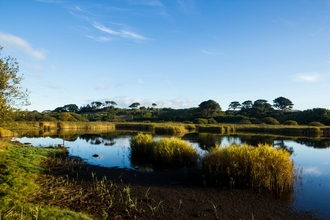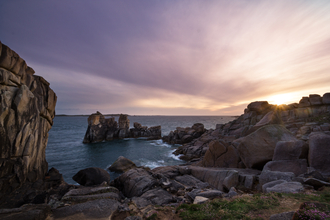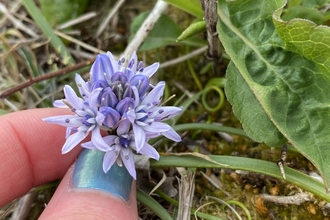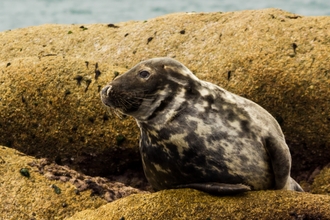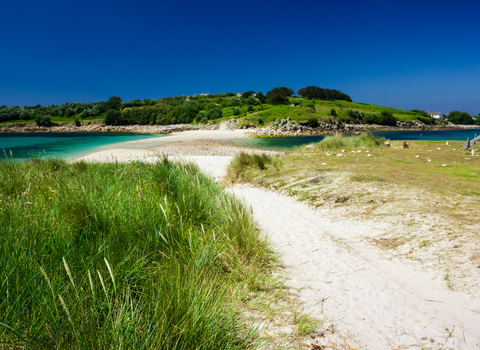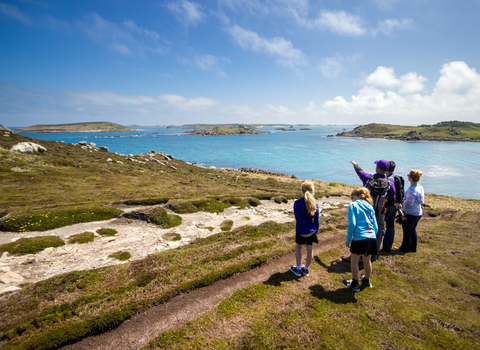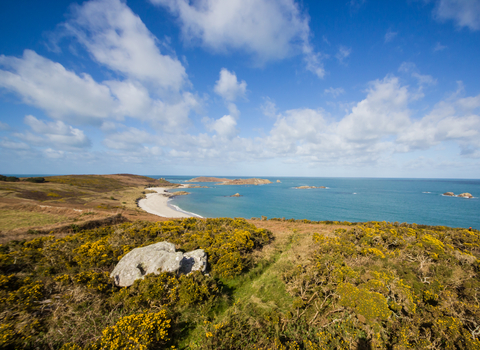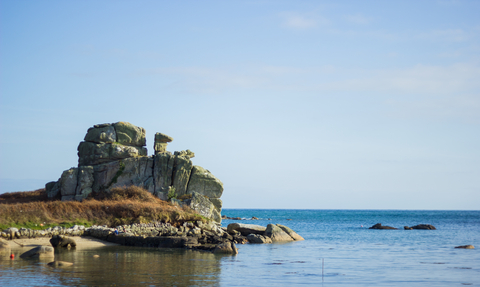
St Mary's
The biggest of the islands
The main island of St Mary’s is dominated by striking rock formations, forming granite barriers between the boiling sea and the fragile coastal ecosystems found inland. Pulpit Rock on Peninnis Head is a good example of a weather-eroded tor that is wreathed in heathland, supporting a habitat of rare plants and lichens.
St Mary’s is home to several wetlands, the largest being Higher Moors and Lower Moors. These are the closest things to nature reserves that we have on Scilly, and both have SSSI status and are overlooked by bird hides. There are just three streams on St Mary's and both areas are nourished by these. At Higher Moors, the stream begins at Holy Vale and travels through the nature trail, feeding an area of grassland that is popular in the summer with reed and sedge warblers and the pretty bog pimpernel. Porth Hellick Pool, the large pool next to the boardwalk at the seaward end, is the largest freshwater body on St Mary’s.
Lower Moors is located between Hugh Town and Old Town and is primarily made up of reedbed and marshland. The wetland is dominated by common reed, with areas of dense and scattered grey willow. The seasonally water-logged soils have abundant hemlock water-dropwort, marsh bedstraw and small populations of royal and lady fern. The site has several shallow open water pools which are important feeding areas for passage and over-wintering migrants and waders including snipe, jack snipe and water rail. In recent years, the pool has attracted such rarities as great blue heron, purple heron and bluethroat, along with less common rail species such as corncrake and spotted crake.
The heathland on St Mary’s is often swathed in heather, becoming a vibrant and beautiful habitat in the warmer months. The area surrounding Giant’s Castle, an Iron-age cliff castle on Salakee Down, boasts the mosaic-like ‘waved heath’ that is a common feature on Scilly. Plants such as spring squill – a hardy and striking flower and a Scilly speciality – blossom in areas like Toll's Hill. Just three species of orchid grow on Scilly, with two of these on St Mary's. The southern marsh orchid blossoms at Lower Moors in the early summer, whilst later in the year you might find the diminutive autumn lady's tresses around the Garrison.
Another area to explore is Peninnis Head along the southern side of St Mary's. This is a significant headland with prominent granite cliffs and tors, scattered amongst maritime heathland and grassland supporting a number of rare plant and lichen species, including sea thrift, sorrel, buck’s-horn plaintain, common scurvygrass, sea carrot and sea mayweed. Red fescue, Yorkshire-fog and the nationally rare early meadow-grass cover the ground. The cliffs and tors are also covered in a rich and varied lichen including the golden hair lichen. The nationally rare ciliate strap-lichen is found on and around certain special rocks.
Bulb fields on St Mary’s often entice an abundance of wildflowers to grow in the arable, abandoned farmland, such as the small-flowered catch fly, a small pale-pink flower that has several colourful varieties.
Wild places to explore on St Mary's
Explore these special places for wildlife on St Mary's
Special species on St Mary's
Find out more about the species you might see at different times of year on St Mary's


